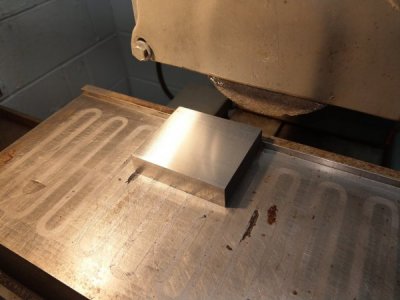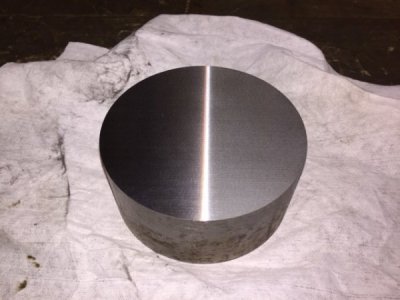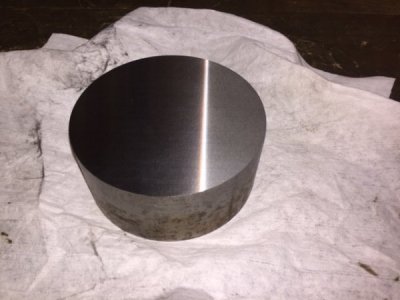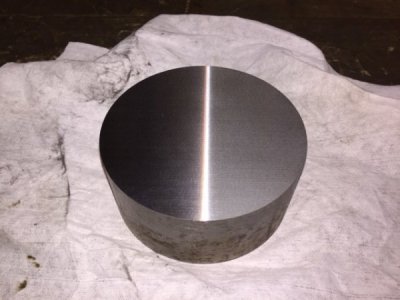projectnut -
Great information on the bearings, I have added it to my web page.
That finish looks pretty good to me. Very creative use of a blade balancer. I do not have a balancer yet, and looking at the prices on them I'll probably end up making one; right now I'm just winging it.
So far I am happy with the results I am getting. I checked my test piece (surfaced on two sides) on my surface plate, and the sides were parallel all over to within a two tenths. Not bad, I think, for a machine that has not yet been tuned up, and with a very used wheel.
I finally got around to removing my mag chuck from the table, so I could get them both cleaned up. I did a lot of online research on mag chucks, and I have saved the best links here:
https://sites.google.com/site/lagadoacademy/machining---lathes-mills-etc/my-surface-grinder---2
Once I had the chuck cleaned up, I found a serial number on it:
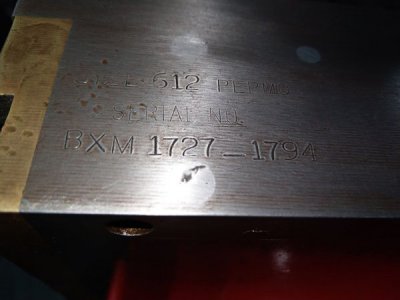
From my research I found the following "facts" which may or may not be correct:
- Older Walker chucks (and maybe all older mag chucks) are oil filled.
- Newer ceramic magnet chucks are not oil filled (typically a specific grease is recommended by the manufacturer)
- Oil filled chucks can "stiffen up" if they are kept upright for a long time; flip them over to allow the oil to lubricate the magnets - this may help the mechanism work more easily
- Chucks may lose oil if the seals around the on/off handle are worn. Some chucks have an oil fill hole. For oil, 90W (non-detergent) or way oil is recommended.
- Weak magnetic chucks: This may be due to wear in the internal cam mechanism or related parts. Opening up the chuck and repairing this may rescue the chuck.
My chuck has an oil fill hole (I think). There is an open threaded hole on one end; I didn't think it would hurt to squirt a little Vactra-2 into the hole. I also flipped the chuck upside down and worked the on/off handle a few times; it seemed to help. I closed up the oil (?) hole with a screw to keep crud out.
An alternate explanation for the "oil hole": Some chucks have an adjustment screw to stop the internal mechanism from sliding past the optimal position. There could have been an adjustment screw in the hole at one time.
Finally got some new wheels in. Next step is to grind in the table and mag chuck.


